When you load the roof, the centre of gravity of the vehicle rises and the usual driving characteristics as well as the steering and braking characteristics change. During cornering, the vehicle tilts more strongly and may react more sluggishly to steering movements.
If you exceed the maximum roof load, the driving characteristics, as well as the steering and braking characteristics, will be greatly impaired.
The vehicle could be damaged by roof racks which have not been tested and approved by Mercedes-Benz.
The sliding sunroof may be damaged by the roof rack if you attempt to open it when the roof rack is fitted.
In order to allow ventilation of the vehicle interior, you can raise the sliding sunroof.
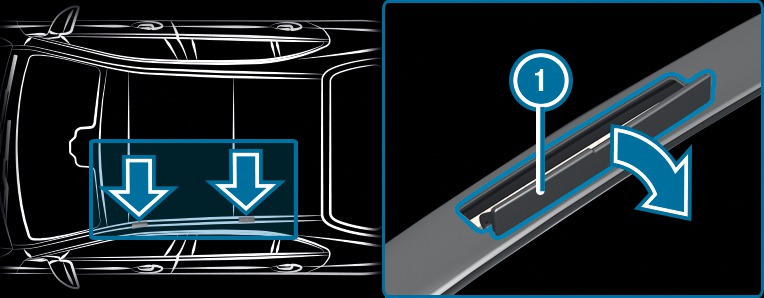
The covers may be damaged and scratched when being opened.
 upwards in the direction of the arrow.
upwards in the direction of the arrow.  .
. 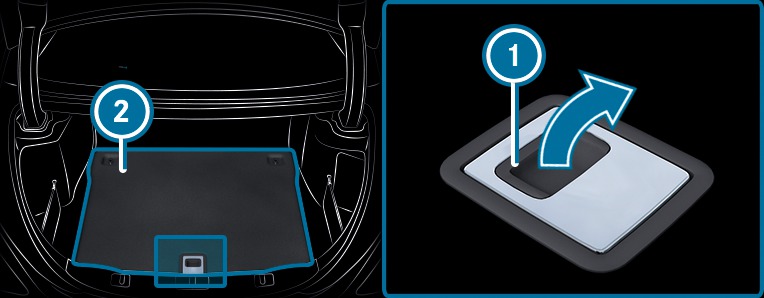
 upwards using handle
upwards using handle  until it rests against the boot separator.
until it rests against the boot separator. 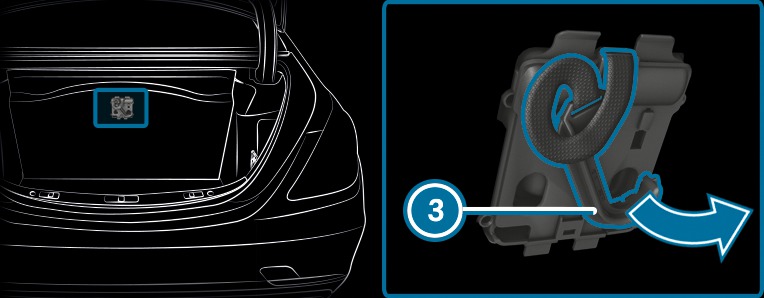
 on the underside of the boot floor.
on the underside of the boot floor. 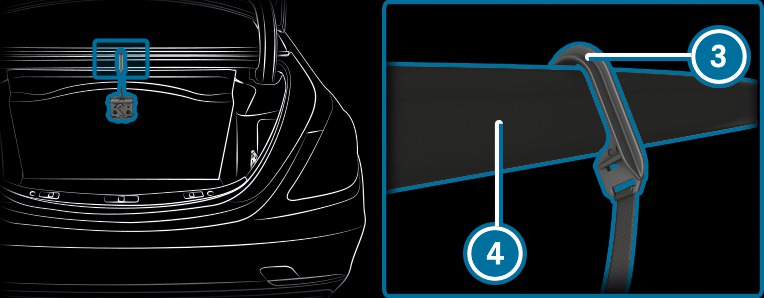
 onto drip rail
onto drip rail  .
. If the ball neck is not engaged, the trailer may come loose.
The ball neck may swing outwards when unlocking or when it has not been properly engaged.
There is a risk of injury within the ball neck's range of movement!
The vehicle is secured against rolling away.
The range of movement is clear.
The trailer cables or adapter plugs have been removed.
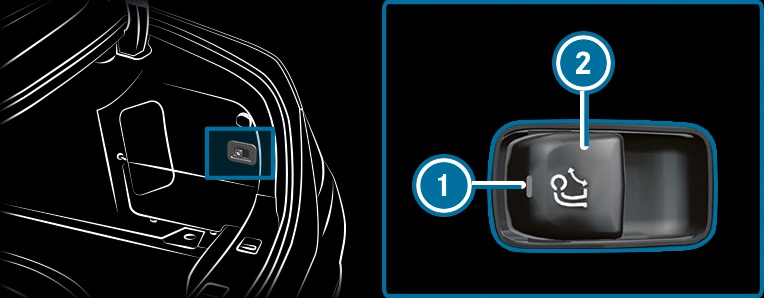
 until the ball neck unlocks.
until the ball neck unlocks. The ball neck will fold out from under the rear bumper.
Indicator lamp  will flash.
will flash.
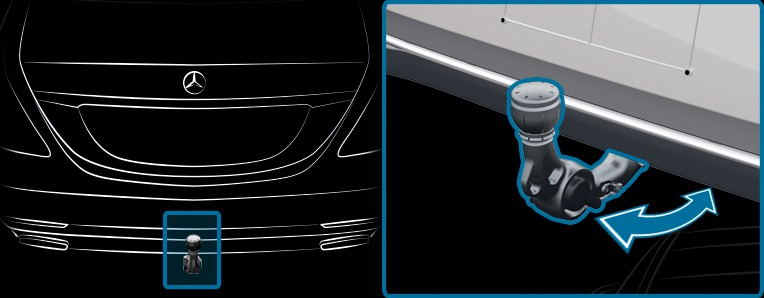
Indicator lamp  on the ball neck release switch will go out.
on the ball neck release switch will go out.
If the ball neck is not securely locked in place, the Check trailer hitch lock display message will appear on the multifunction display.
Make sure that the ball on the ball neck is clean. Check that it is either greased or dry (grease-free), depending on the instructions for the trailer.

 until the ball neck unlocks.
until the ball neck unlocks. The ball neck will fold up under the rear bumper.
Indicator lamp  flashes.
flashes.
Indicator lamp  will go out and the message on the multifunction display will disappear.
will go out and the message on the multifunction display will disappear.
Warning and indicator lamps More
Display messages
Secure the load using the luggage net hooks.
Do not use elastic straps or nets to secure a load. These are intended only as anti-slip protection for light loads.
Do not route lashing materials across sharp edges or corners.
Pad sharp edges for protection.
There are up to four luggage net hooks in the boot depending on the equipment installed.
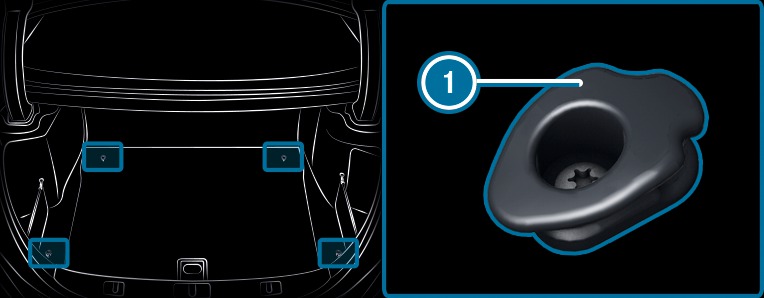

If you inadequately stow objects in the vehicle interior, they could slip or be tossed around and thereby strike vehicle occupants. In addition, cup holders, open stowage spaces and mobile phone brackets cannot always restrain the objects they contain in the event of an accident.
There is a risk of injury, particularly in the event of sudden braking or a sudden change in direction.
Observe the notes on loading the vehicle.
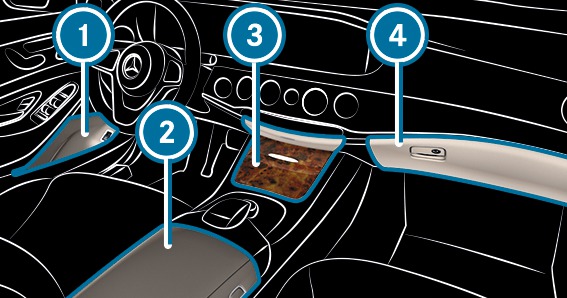




If you inadequately stow objects in the vehicle interior, they could slip or be tossed around and thereby strike vehicle occupants. In addition, cup holders, open stowage spaces and mobile phone brackets cannot always restrain the objects they contain in the event of an accident.
There is a risk of injury, particularly in the event of sudden braking or a sudden change in direction.
Observe the notes on loading the vehicle.
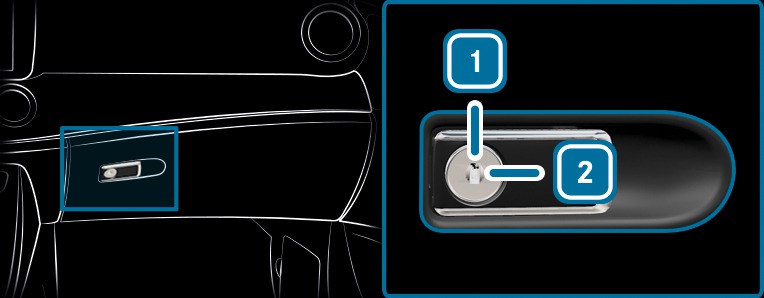
 (to lock) or anti-clockwise
(to lock) or anti-clockwise  (to unlock).
(to unlock). If you inadequately stow objects in the vehicle interior, they could slip or be tossed around and thereby strike vehicle occupants. In addition, cup holders, open stowage spaces and mobile phone brackets cannot always restrain the objects they contain in the event of an accident.
There is a risk of injury, particularly in the event of sudden braking or a sudden change in direction.
Observe the notes on loading the vehicle.
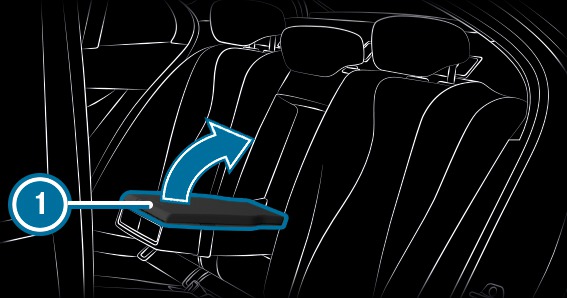
 and swing the cover of the armrest upwards.
and swing the cover of the armrest upwards. 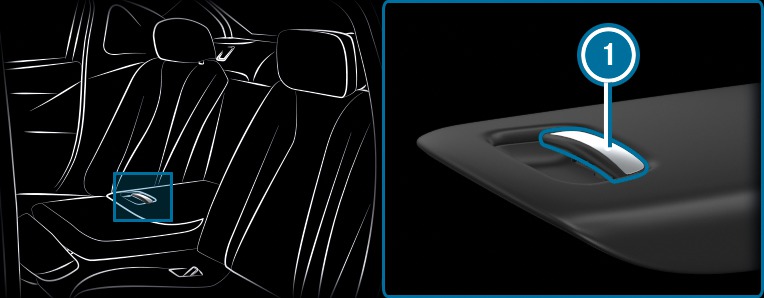
 and fold the cover of the armrest upwards.
and fold the cover of the armrest upwards. 
